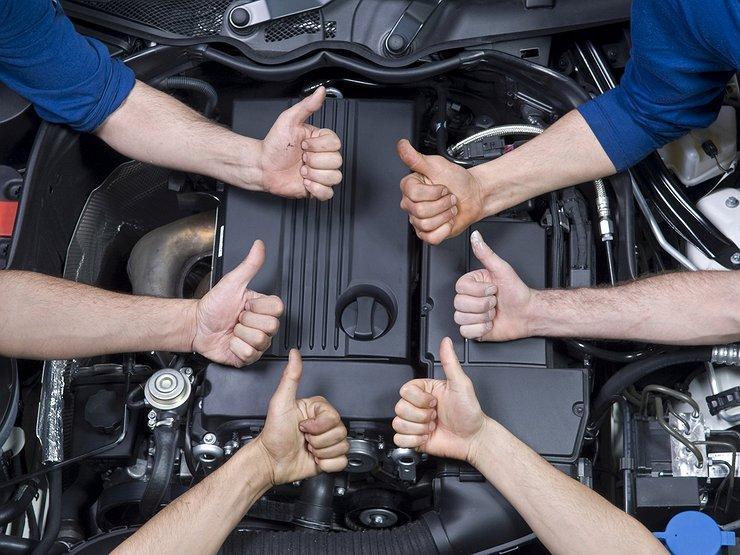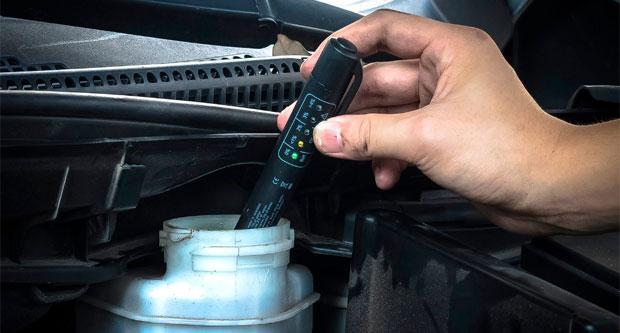
Brake fluid tester. Checking the most important car system
Why are brake fluid testers in demand?
Brake fluids are more than 95% glycols or polyglycols. These simple alcohols have a good set of performance characteristics, which allows them to be used in modern brake systems. Glycol brake fluids transmit pressure over long distances without distortion, have high lubricity, and are resistant to high and low temperatures.
However, glycols have one feature that is not only undesirable, but even dangerous. These alcohols are hygroscopic. That is, they are able to accumulate moisture from the environment. And the presence of water in the volume of the brake fluid leads to a sharp drop in its boiling point. The “brake” that boiled in the highways will instantly disable the entire system. The brakes will simply fail. For example, the appearance of only 3,5% water in DOT-4 liquid reduces its boiling point from 230 °C to 155 °C.


Water accumulates in the brake fluid gradually. The speed of this process depends on many factors: ambient temperature, air humidity, intensity of car operation, brake system design, etc. Therefore, it is impossible to predict in advance whether a critical amount of moisture has accumulated in the liquid solely by the time of its operation.
There is an expiration date for brake fluid, but this parameter should not be confused with the service life. These are different things. The expiration date indicates the shelf life of the product in a closed container.
Therefore, special analyzers have been developed to express check the brake fluid for the presence of water in it.


Principle of operation
Any brake fluid tester, regardless of the design of a particular model, has a battery, two electrodes and an electrical circuit with an algorithm for evaluating the readings. Sometimes the tester electrodes are paired in one probe. In some cases, they are divided into two separate outputs fixed on the case. But there is a fundamentally important point here: the distance between the electrodes in any tester always remains unchanged.
Initially, dry brake fluid without moisture (or with a minimum amount of it) has a high electrical resistance. As water accumulates, the resistance of the fluid decreases. It is this value that the brake fluid tester measures. A current is applied to one of the electrodes, which passes through the liquid and enters the other electrode. And the resistance of the moistened liquid determines the voltage drop in this kind of electrical circuit. This voltage drop catches the “brain” of the tester and interprets it according to the base laid in the memory. The resistance to the passage of electric current is converted into the percentage of moisture in the liquid.
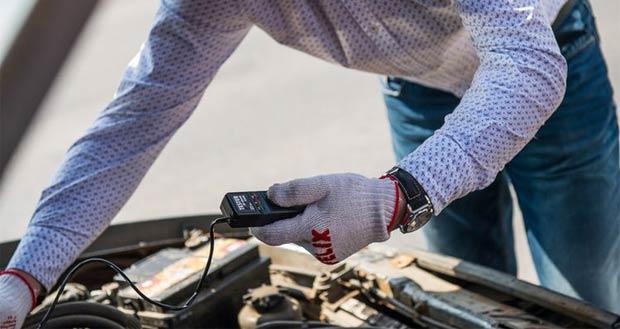

If you change the distance between the electrodes, then the resistance of the liquid will change: it will increase when the electrodes are removed and vice versa. There will be a distortion of the readings. Therefore, testers with damaged or deformed electrodes may give incorrect information.


How to use?
Using a brake fluid quality tester generally comes down to two simple operations.
- Turning on the device and waiting for the ready diode to light up (usually a green LED, which simultaneously indicates the absence of moisture in the liquid).
- Lowering the electrodes of the device into the tank until one of the indicators of the state of the liquid lights up. In this case, it is desirable to lower the device or remote probe into the tank strictly vertically. Typically, the tester evaluates the condition of the liquid in 1-2 seconds.
After measurements, the electrodes must be wiped with a rag.
Critical is the presence of 3,5% moisture in the volume of the brake fluid. This state is indicated by a red diode or a light bulb burning in the red zone of the instrument's evaluation scale. If there is 3,5% water by volume, the fluid must be replaced as soon as possible.
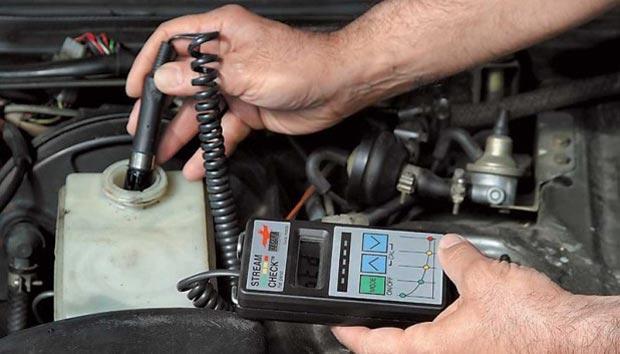

Price and reviews
Currently, almost all brake fluid testers sold in Russian stores have a “marker” design. Outwardly, they look like a regular marker. Their price ranges from 200 to 500 rubles, depending on the model and the seller's margin.
In the central part of such a tester is a AAA battery. In front, under the cap, there are two metal electrodes, which must be immersed in the brake fluid. At the top is the power button. This version of the tester is ideal for private use.
More sophisticated brake fluid testers are less common. They are usually used in service stations and car services. For example, the following devices can still be found on sale:
- Brake Fluid Tester ADD7704 - the price in Russian stores is about 6 thousand rubles;
- Brake Fluid Tester ADD7703 - found quite often, you can buy it for 3-3,5 thousand rubles
- Brake Fluid Tester WH-509 - costs an average of 12 thousand rubles, it is practically not sold in the Russian Federation.
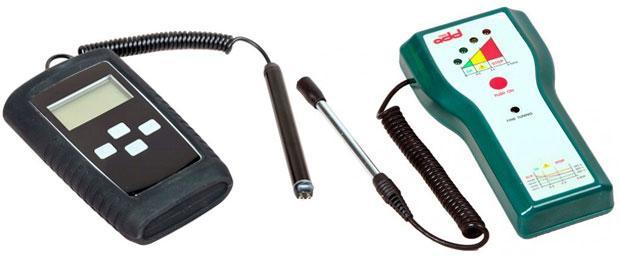

Professional brake fluid testers have flexible settings and increased measurement accuracy. One of the options is to evaluate fresh brake fluid as a reference and calibrate the device according to the readings received.
To control the condition of the liquid of your own car, a cheap pencil tester is enough. Motorists and service station specialists claim that the accuracy of his testimony is sufficient for an adequate assessment. And the reviews of drivers on the network about these devices are mostly positive. The device is easy and convenient to operate. The procedure for evaluating the "brake" takes 1-2 minutes with all related operations. And the error of indications does not exceed 10%.


Watch this video on YouTube
